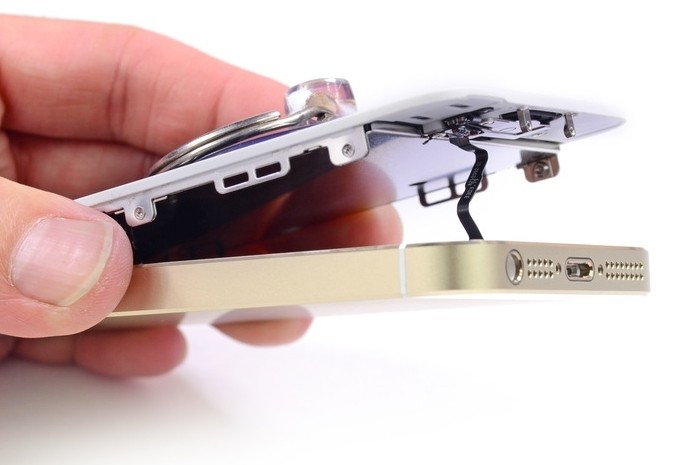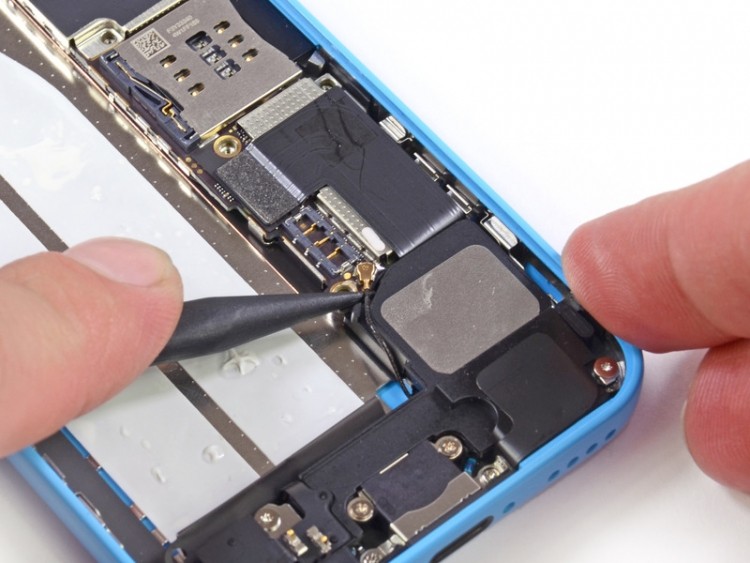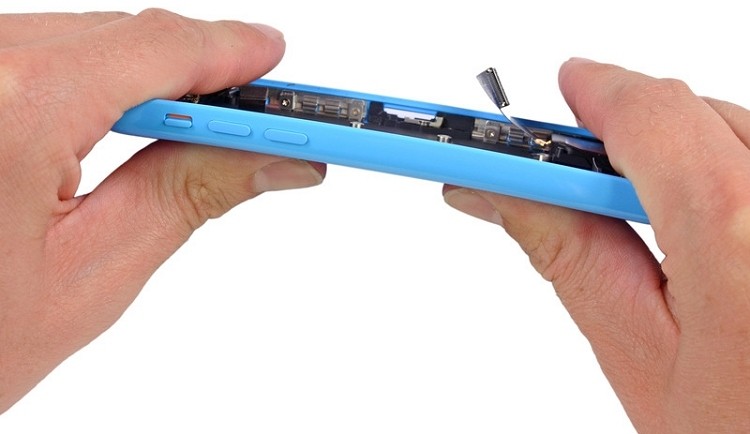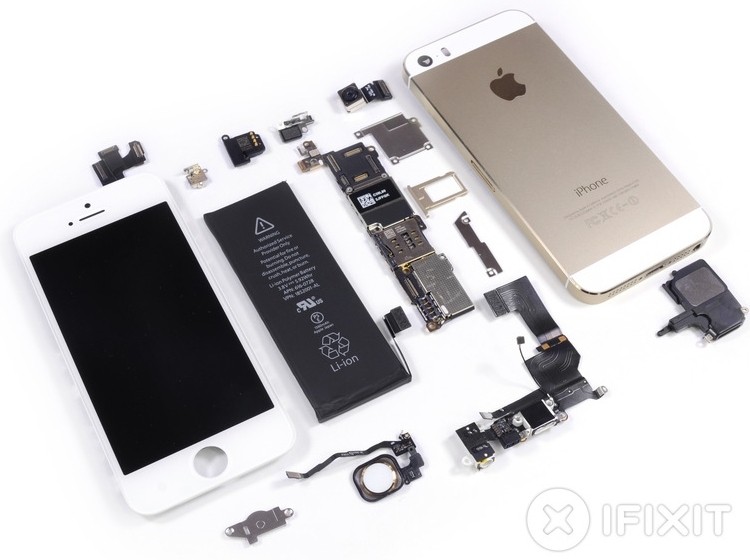Update: iFixit sends word that they have since found the elusive M7 coprocessor (NXP LPC18A1). Turns out, it was buried beneath a neoprene-looking cover.
Apple’s latest iPhones have finally hit the streets and for two unlucky devices, it’s already the end of the road as they wound up on the iFixit operating table. Both the iPhone 5S and the 5C have been given the full teardown treatment for our viewing pleasure.
Right from the start, it’s clear that Apple doesn’t want consumers tinkering around inside their iDevices as evident by the continued use of Pentalobe screws and healthy doses of adhesive on the battery and antenna connectors. In the case of the 5S, extra caution is necessary when removing the display as to not damage the delicate Touch ID cable.

Inside, however, everything pretty much looks like it did in the iPhone 5 save for a few differences (the lack of a battery removal tab being one). On the 5S, the team was unable to find the M7 coprocessor that Apple spoke so highly of during the product reveal last week. As it turns out, it’s likely just an additional function built into the A7.

As for the iPhone 5C, well – it pretty much comes apart just like the 5S through the use of a Pentalobe screwdriver and a suction cup. The battery – slightly larger than the one found in the original iPhone 5 – was also held in place with adhesive, making replacement a bit more tedious (but not impossible). Elsewhere things were smooth sailing and as expected. Oh, and if you were wondering about the durability of the plastic used on the cheaper version, fear not as we are told it’s plenty strong.

When all said and done, both handsets earned the same six out of 10 repairability score. As with the iPhone 5, the display assembly is the first component out of the phone on both models which simplifies replacements. The battery is still also fairly easy to get to on either phone although the missing pull tab and added adhesive are a bit prohibitive.

The 5S received a negative mark due to how easy it would be to damage the fingerprint sensor cable during disassembly while usage of adhesive on the 5C’s antenna connectors further hinders disassembly. Both devices also use rare-ish Pentalobe screws and the front glass, digitizer and LCD are all one component, thereby increasing cost of repair.